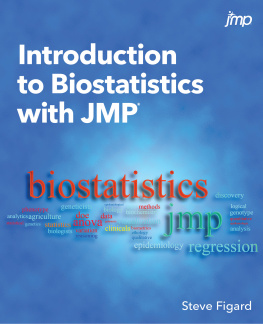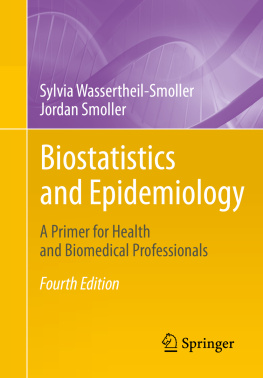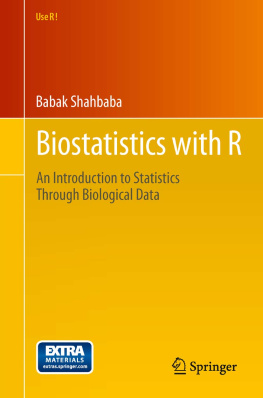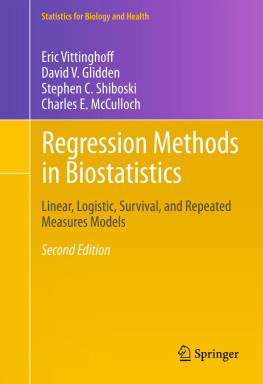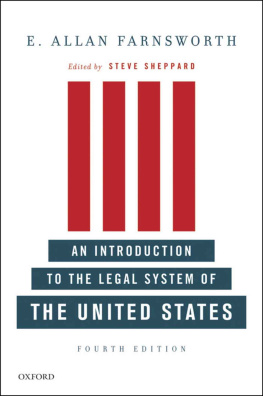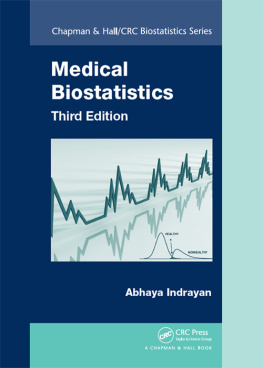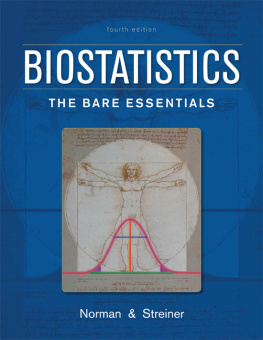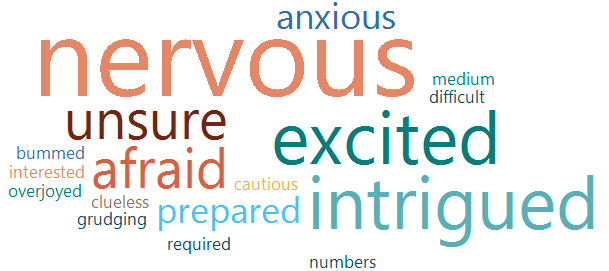Steve Figard - Introduction to Biostatistics with JMP
Here you can read online Steve Figard - Introduction to Biostatistics with JMP full text of the book (entire story) in english for free. Download pdf and epub, get meaning, cover and reviews about this ebook. year: 2019, publisher: SAS Institute, genre: Romance novel. Description of the work, (preface) as well as reviews are available. Best literature library LitArk.com created for fans of good reading and offers a wide selection of genres:
Romance novel
Science fiction
Adventure
Detective
Science
History
Home and family
Prose
Art
Politics
Computer
Non-fiction
Religion
Business
Children
Humor
Choose a favorite category and find really read worthwhile books. Enjoy immersion in the world of imagination, feel the emotions of the characters or learn something new for yourself, make an fascinating discovery.
- Book:Introduction to Biostatistics with JMP
- Author:
- Publisher:SAS Institute
- Genre:
- Year:2019
- Rating:3 / 5
- Favourites:Add to favourites
- Your mark:
- 60
- 1
- 2
- 3
- 4
- 5
Introduction to Biostatistics with JMP: summary, description and annotation
We offer to read an annotation, description, summary or preface (depends on what the author of the book "Introduction to Biostatistics with JMP" wrote himself). If you haven't found the necessary information about the book — write in the comments, we will try to find it.
Introduction to Biostatistics with JMP — read online for free the complete book (whole text) full work
Below is the text of the book, divided by pages. System saving the place of the last page read, allows you to conveniently read the book "Introduction to Biostatistics with JMP" online for free, without having to search again every time where you left off. Put a bookmark, and you can go to the page where you finished reading at any time.
Font size:
Interval:
Bookmark:
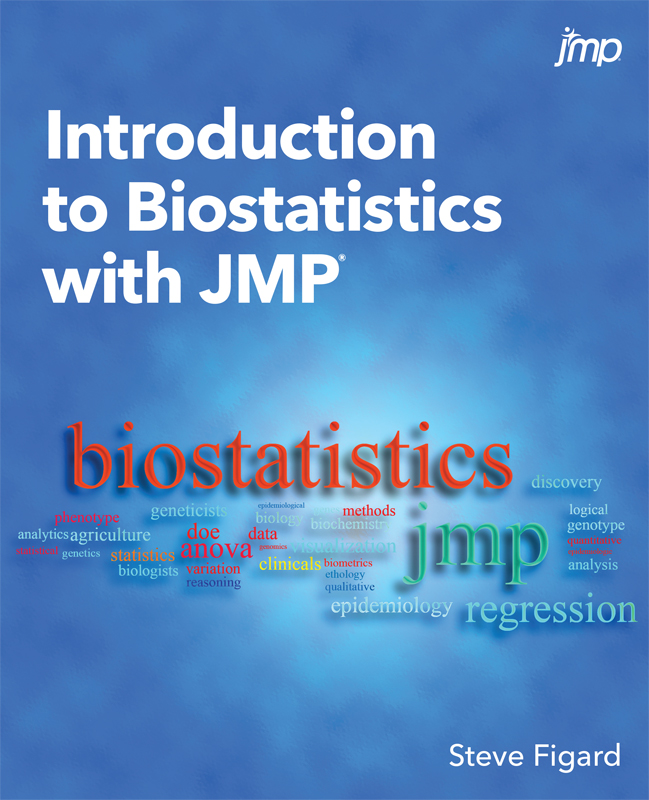
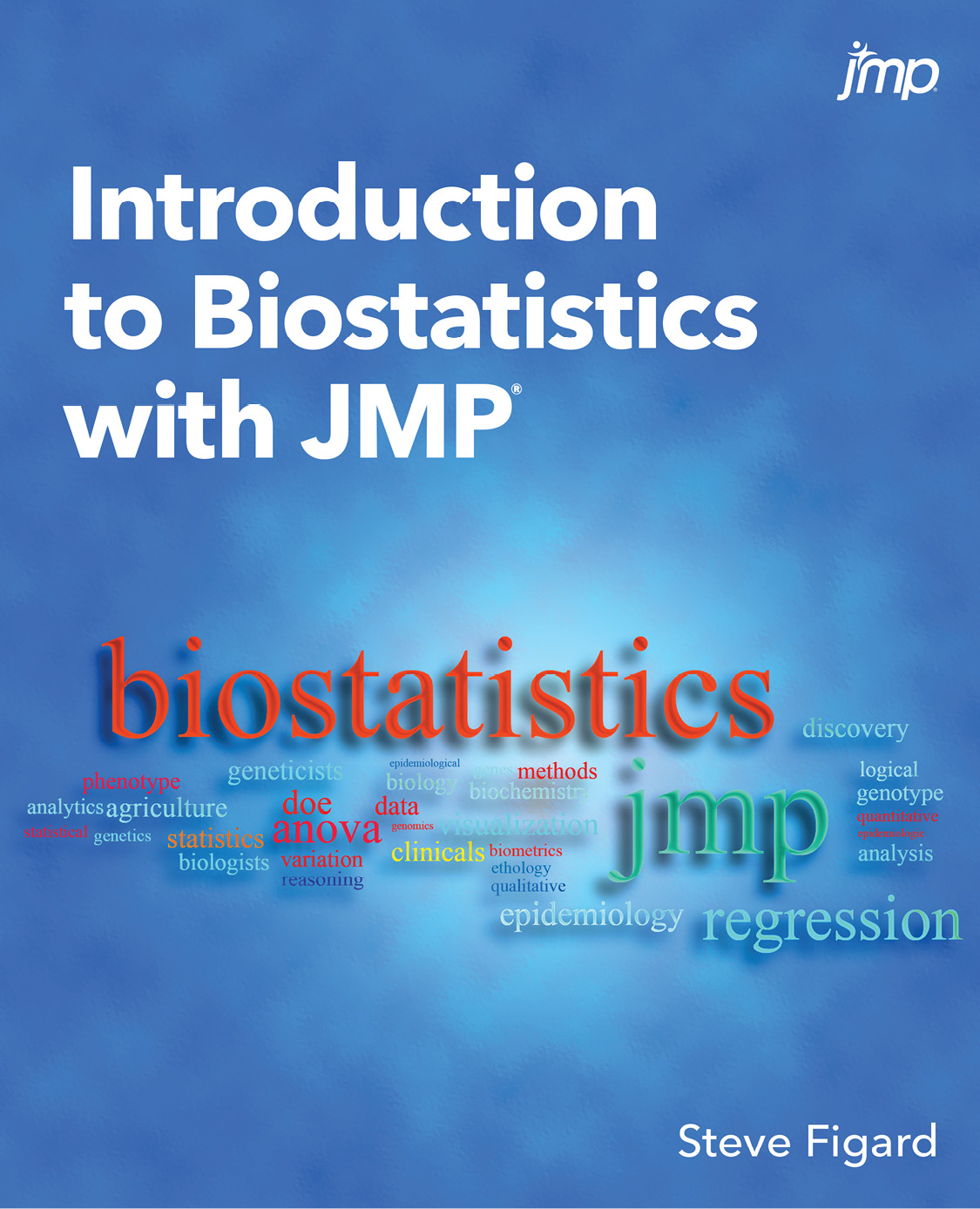
The correct bibliographic citation for this manual is as follows: Figard, Steve. 2019. Introduction to Biostatistics with JMP. Cary, NC: SAS Institute Inc.
Introduction to Biostatistics with JMP
Copyright 2019, SAS Institute Inc., Cary, NC, USA
ISBN 978-1-64295-456-2 (Hardcover)
ISBN 978-1-62960-633-0 (Paperback)
ISBN 978-1-63526-720-4 (Web PDF)
ISBN 978-1-63526-718-1 (epub)
ISBN 978-1-63526-719-8 (kindle)
All Rights Reserved. Produced in the United States of America.
For a hard copy book: No part of this publication may be reproduced, stored in a retrieval system, or transmitted, in any form or by any means, electronic, mechanical, photocopying, or otherwise, without the prior written permission of the publisher, SAS Institute Inc.
For a web download or e-book: Your use of this publication shall be governed by the terms established by the vendor at the time you acquire this publication.
The scanning, uploading, and distribution of this book via the Internet or any other means without the permission of the publisher is illegal and punishable by law. Please purchase only authorized electronic editions and do not participate in or encourage electronic piracy of copyrighted materials. Your support of others rights is appreciated.
U.S. Government License Rights; Restricted Rights: The Software and its documentation is commercial computer software developed at private expense and is provided with RESTRICTED RIGHTS to the United States Government. Use, duplication, or disclosure of the Software by the United States Government is subject to the license terms of this Agreement pursuant to, as applicable, FAR 12.212, DFAR 227.7202-1(a), DFAR 227.7202-3(a), and DFAR 227.7202-4, and, to the extent required under U.S. federal law, the minimum restricted rights as set out in FAR 52.227-19 (DEC 2007). If FAR 52.227-19 is applicable, this provision serves as notice under clause (c) thereof and no other notice is required to be affixed to the Software or documentation. The Governments rights in Software and documentation shall be only those set forth in this Agreement.
SAS Institute Inc., SAS Campus Drive, Cary, NC 27513-2414
October 2019
SAS and all other SAS Institute Inc. product or service names are registered trademarks or trademarks of SAS Institute Inc. in the USA and other countries. indicates USA registration.
Other brand and product names are trademarks of their respective companies.
SAS software may be provided with certain third-party software, including but not limited to open-source software, which is licensed under its applicable third-party software license agreement. For license information about third-party software distributed with SAS software, refer to http://support.sas.com/thirdpartylicenses.
This book is based on the need for a college-level textbook with examples derived from the biological sciences as an introduction to biostatistics using JMP software. The contents of this book follow that of an introductory course on biostatistics created for and taught at Bob Jones University and reflects an intended audience of undergraduates forced to take a course they really rather wished they could avoid. These undergraduates generally have enough biological and mathematical knowledge to be dangerous, coupled with an innate fear of Statistics, that renders them quite dangerous indeed. Although a basic knowledge of math up to and including algebra is generally desirable, this work studiously avoids the underlying formulas and mathematical gyrations found in many of the more comprehensive books on statistics. This is by design. Most practitioners of statistics are not mathematicians, dont care about the underlying math, and are content to let their software deal with those details as long as they can get the answers that they need with some assurance that they are correct. To that end, the emphasis here will be on how to set up and execute the statistical tests in JMP and how to interpret the output.
Before getting into the details of the individual tests, however, it is necessary to cover some basics of how to think like a statistician, or a reasonable facsimile thereof, to ensure that the right analysis is being done in the first place. The reader will find most of these preliminaries in the first chapters, with their application to specific tests being covered in the remaining chapters. The ultimate goal is to create bioscientists who can competently incorporate biostatistics into their investigative toolkits to solve biological research questions as they arise.
Given the intended audience of this work undergraduate biology and health science majors the question asked in this section title is probably best answered by the opening paragraph of Dawn Hawkins excellent book when she writes:
Let us consider the likely scenario that you are a student of the biosciences. Whether you are a biomedic, a physiologist, a behaviourist, an ecologist, or whatever, you like learning about living things you enjoy learning about the human body, bugs, and plants. Now, lo and behold, you have been forced to take a course that will make you do things with numbers and, dread-o-dread, even do something with numbers using a computer. You have probably decided that the people who are making you do this are mindless sadists.
This captures many of the expressions I see on the first day of class on all too many of my students. Lest this seems to be an exaggeration, I have been asking those students to write down a one-word description of how they feel about taking this course and collecting those
responses. Using the text explorer feature in JMP to create a word cloud, I have acquired the following words to date:
Note that the majority of students are nervous, unsure, afraid or anxious as opposed to excited or intrigued. (Although it is intriguing that so many use that word to describe a biostatistics course at all!)
But I will argue here that we are neither mindless nor sadists in our demand that you, as a promising practitioner of the biological sciences, learn how to do statistics.
There are at least three reasons why this is so. First, if you are going to be a scientist of any kind, you should have some understanding of the philosophy and history of science. This is the big picture into which you will orient your own efforts at contributing to the body of knowledge. The twentieth century saw a paradigm shift in the basic philosophy underlying the scientific enterprise. The prior century, in part due to successful efforts in astronomy at understanding the movement of planets and other heavenly bodies, had developed a philosophical determinism in which mathematic formulas led to precise predictions. As David Salsburg notes,
Science entered the nineteenth century with a firm philosophical vision that has been called the clockwork universe. It was believed that there were a small number of mathematical formulas (like Newtons laws of motion and Boyles laws for gases) that could be used to describe reality and to predict future events. All that was needed for such prediction was a complete set of these formulas and a group of associated measurements that were taken with sufficient precision.
Font size:
Interval:
Bookmark:
Similar books «Introduction to Biostatistics with JMP»
Look at similar books to Introduction to Biostatistics with JMP. We have selected literature similar in name and meaning in the hope of providing readers with more options to find new, interesting, not yet read works.
Discussion, reviews of the book Introduction to Biostatistics with JMP and just readers' own opinions. Leave your comments, write what you think about the work, its meaning or the main characters. Specify what exactly you liked and what you didn't like, and why you think so.

